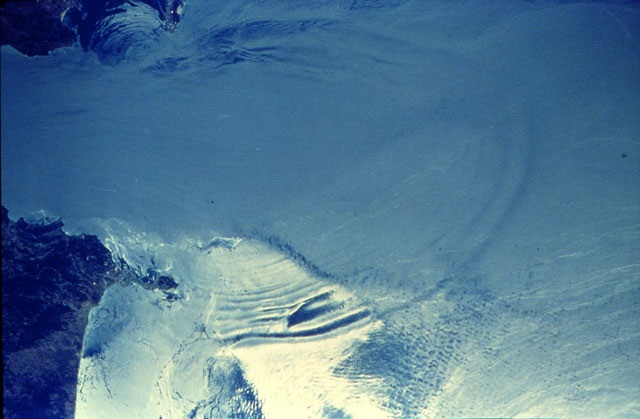Long oceanic ring waves seen from space
Internal waves, supported by variations in ocean density, have a strong effect on offshore structures, underwater cables and submersibles. They also contribute to the ocean mixing processes, which is important for climate. The waves generated in narrow straits (for example, in the Strait of Gibraltar, shown in a satellite image in Figure 1), river-sea interaction areas, as well as the waves generated by some localised topographic features, are ring-shaped and propagate over an underlying current. The project led by Dr. Karima Khusnutdinova aims to develop new mathematical models and methods in order to study the behaviour of such waves.

It was shown that despite the clashing geometries of the waves and the current, there exists a linear modal decomposition that is different from the known decomposition for plane waves. This decomposition was used to develop the theory. The distortion of the wavefronts of surface and internal waves propagating in a two-layered fluid over the same piecewise-constant current was described analytically and revealed a striking difference: while the wavefront of the surface ring wave is elongated in the direction of the current, the wavefront of the internal ring wave is squeezed in that direction. This counter-intuitive behaviour was linked to the issues of stability of the waves.
Current work is devoted to studying the behaviour of the waves for other types of stratification and currents, as well as developing new advanced models and methods for the waves of greater amplitude. The work opens new avenues for the research into 3-dimensional waves in fluids.
Related links
- Relevant publications: DOI: 10.1017/jfm.2016.147; DOI: 10.1016/j.physd.2016.02.013; DOI: 10.2205/2020ES000734
- Video of the lecture given in Canada
- Video of the panel discussion in Australia